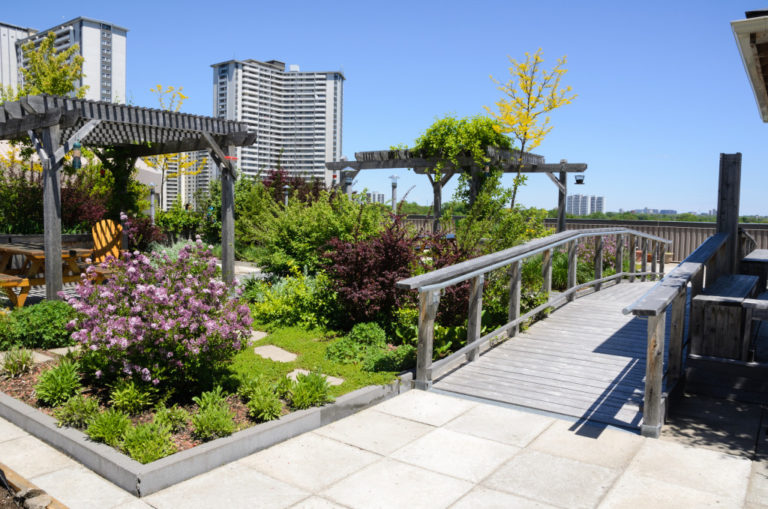There’s hardly any place for a garden in dense metropolitan areas. A house with a yard costs a fortune, and what little outdoor space could be put to better use as a car garage. In the suburbs, meanwhile, the lawns are carefully manicured to achieve a balanced landscape. After all, not every square inch of the curb should be filled with flowering plants. As such, homeowners can’t plant all the greenery they would want to.
There is, however, a bit of free space that you can use to expand your garden—your flat roof. The roof offers a few square meters of bare space that can be converted to a modern garden.
Keep in mind these considerations before you start yours.
Take Note of the Amount of Sun and Heat
Different plants require different levels of sunlight and heat, so check for the heat that your roof space receives. Most roofs get six hours of direct sunlight, but your roof might be shaded by neighboring buildings or tall trees. In this case, you might want to populate your roof garden with shade-loving plants.
The paint on the roof also affects the temperature. Dark-colored roofs are significantly hotter than a white or silver roof. So if you have black roofs, you’ll need plants that can survive scorching temperatures.
Take Account of the Wind
If you’re living in a windy part of Michigan, your rooftop plants may take the blow, especially if there aren’t any taller houses or trees that can break the wind. While some plants can handle a bit of gust, some, like soft-stalked herbs and light succulent pots, can bend, break, and roll onto the floor.
The most vulnerable plants are those that are top-heavy, long-stemmed, and placed in vase-like containers. To prevent falling and toppling, use square planters, and place them near a windbreak (a trellis or a post). The better option would be to plant low-growing flowering shrubs that won’t be damaged by the wind.
Another consideration: light gardening materials, such as watering cans and lightweight chairs, can move and smash against your plants, so make sure they’re stored securely.
Ensure Water Supply and Drainage on the Roof

Your rooftop plants will be needing a lot of water during the growing season, which means the roof needs to provide a steady supply of water. It doesn’t make sense for you to haul buckets of water from the nearest bathroom to the top of the house.
Many home gardeners use drip irrigation fed from roof-level spigots. You can also install a rooftop rain barrel. Just account for the weight of a full cistern to make sure it’s within your roof’s capacity. You can also consult with a residential flat roofing contractor in Michigan for more sophisticated irrigation solutions.
If, however, your only option is to bring water from the house to the roof, keep your plants to a minimum. You can also start a succulent garden, which requires far less water than conventional flowering plants, to ensure you won’t make a mess of your roof.
A well-thought-out roof garden minimizes the risk of mess and accidents. With enough sunlight, water, and wind, your garden will flourish and contribute to the greenery in suburban Michigan.

